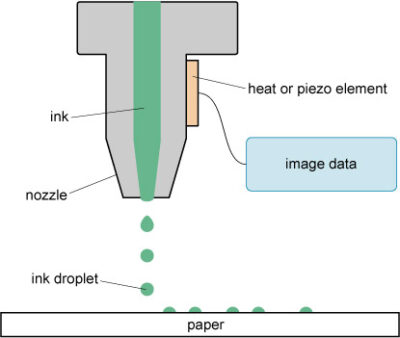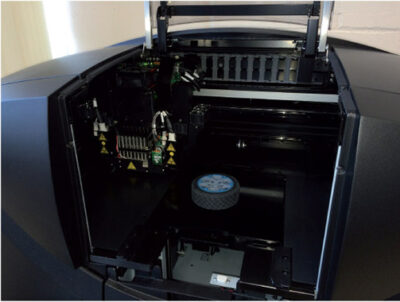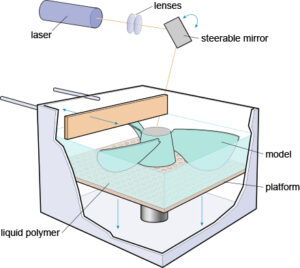
ROHINUR
Figure 13 shows a generic printer head, such as you might find in an office inkjet printer. As the print head moves across the paper, a signal from the microprocessor controller in the printer causes droplets of ink to be fired at the paper in appropriate places. The print head moves back and forth as the paper advances under the head.

This figure shows a printer head. Ink flows through a heated nozzle and droplets are transferred to paper in accordance with image data instructions.
Now imagine printing a document using an ink that deposits on the paper as a thick layer when it is dried. Once the first layer is finished and dried, the same paper could be put back into the printer and another layer added. This will result in the deposition of more ink on top. By repeating the process, and maybe altering the design of each layer a little from its predecessor, it should be possible to create a print with a built-up surface.
Some adaptation to the printer would obviously be needed to allow the layers to build-up under the print head. This is the principle for a basic 3D printing machine (Figure 14). However, not all AM is done like this.

Figure shows a 3D laser printer.
Stereolithography (SLA) is an additive process in which an ultraviolet laser beam is used to set off a chemical reaction in a bath of a liquid ultraviolet-sensitive resin (a liquid polymer) that causes the polymer to solidify at one pinpoint position (Figure 15).

Figure shows a laser being focused using lenses and a steerable mirror to create a model fropm liquid polymer on a platform.